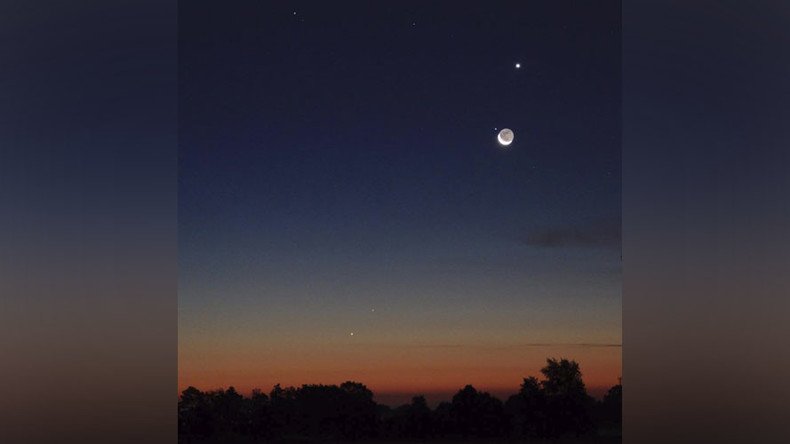Rare lunar 'occultation' happens today: How it works & why it's a big deal

The moon will perform a spectacular astronomical ‘dance’ past three planets and a Leo constellation star as part of a rare lunar ‘occultation’ on Monday.
Depending on your location, you may get the opportunity to see Earth’s natural satellite ‘cover’ Venus, Mars, Mercury or even one of the brightest stars in the sky, Regulus.
WHAT IS IT?
An occultation occurs when a planet (or an asteroid) passes between an object in the distance and the object’s observer.
According to the science publication EarthSky, the event promises to be the last time three planets are almost simultaneously occulted by the moon until 2036.
The discovery of the rings of Uranus can be credited to a 1977 occultation with a far-off star, after NASA’s Kuiper Airborne Observatory spotted the stunning feature against its brighter backdrop during the celestial event.
Almost! Venus Moon conjunction about 20min before occultation, before the clouds came! 18 Sep 2017.https://t.co/UOqLvOJ4f4pic.twitter.com/F1asc5oIxJ
— Shahrin.Ahmad (Shah) (@shahgazer) September 18, 2017
BEST PLACE TO SEE IT
The best place on Earth to see the moon glide between us and Mars will be around the islands of Hawaii at 20:00 GMT.
People on board ships in the South Pacific could also get an eyeful of the Mercury occult before midnight on Monday – should they have a telescope handy.
In the current round of lunar fly-bys, people living around Australia, New Zealand and Indonesia should have already experienced the occultation of Venus and Regulas, which took place between 01:00 and 05:00 GMT.
Already, people have posted messages and photos on instagram and other social media platforms after witnessing the astonishing event.
In June, NASA used its New Horizons spacecraft to study the stellar occultation of stars by a bright Kuiper Belt object known as 2014 MU69.
READ MORE: Lunar volcanoes: New NASA images highlight volcanic activity on the moon
Viewing the occultation by the ancient object, travelling through space 4 billion miles from Earth, was described as “historic” by the NASA New Horizons team.












